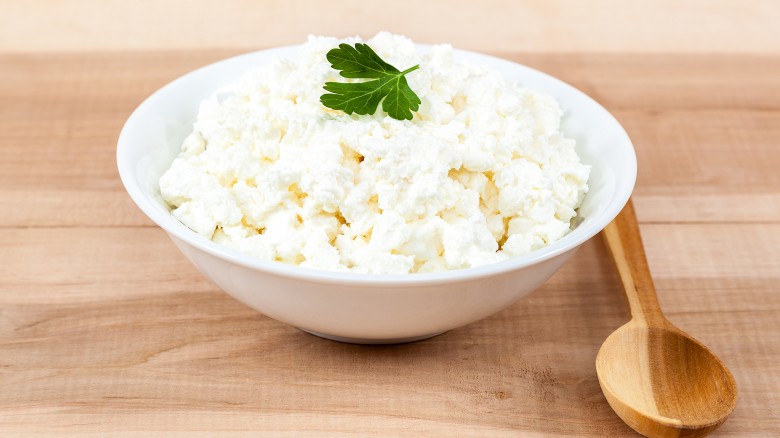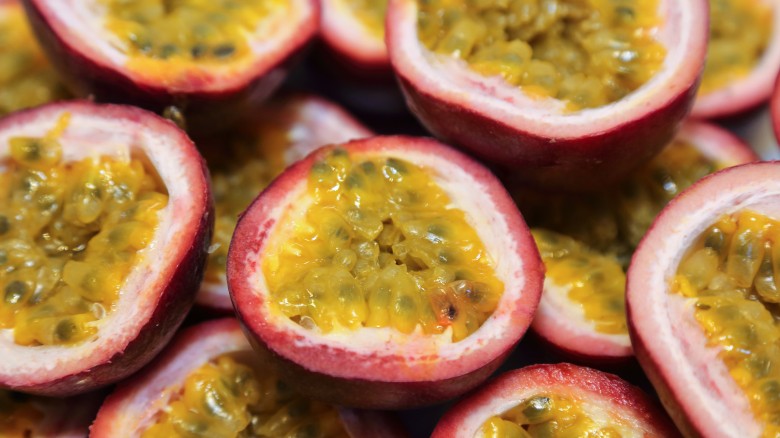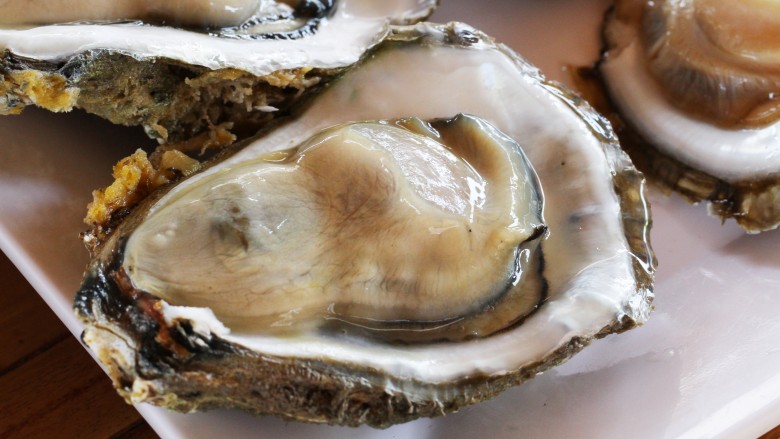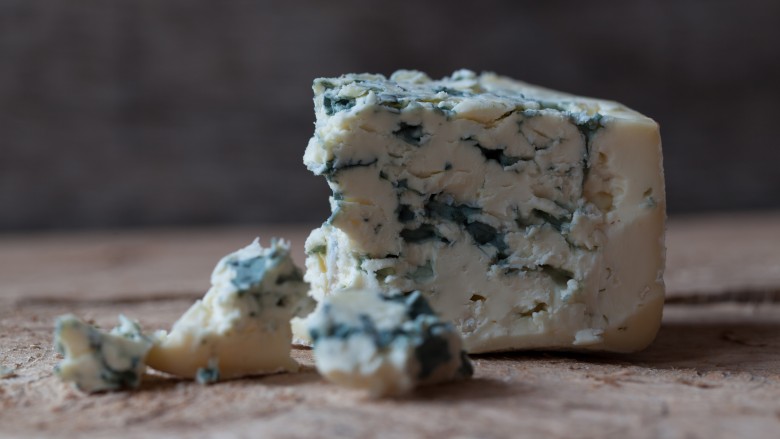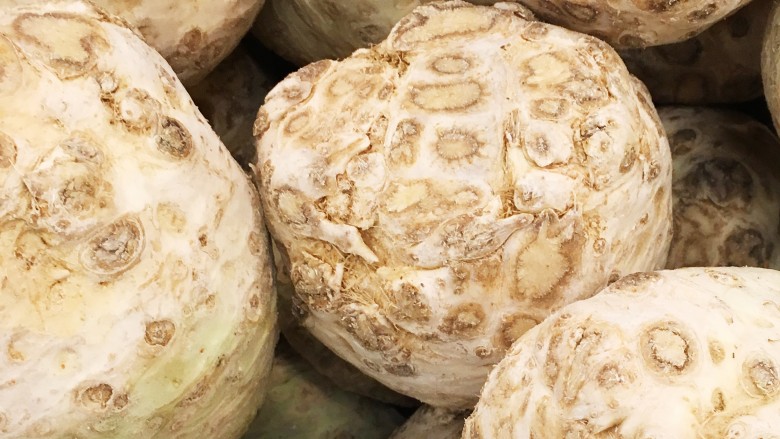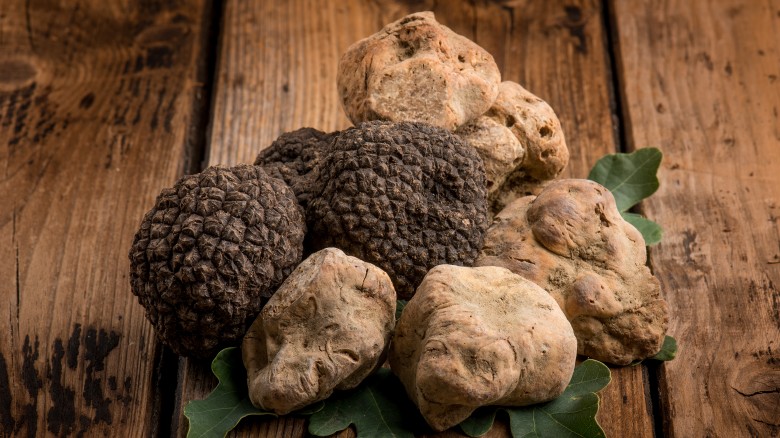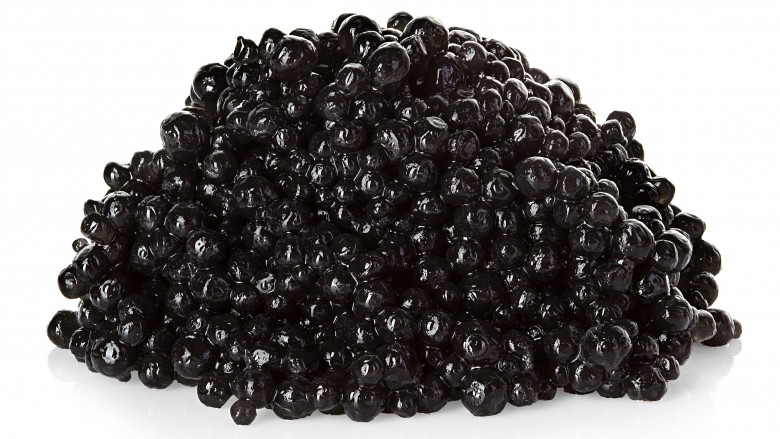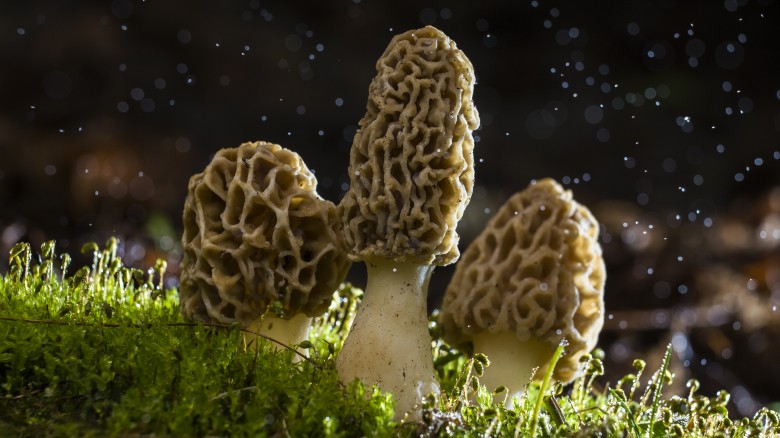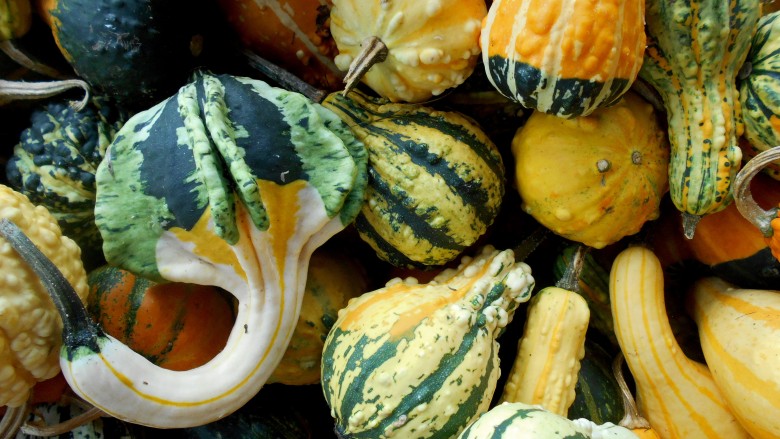Foods That Look Terrible But Actually Taste Amazing
In a culture obsessed with food, many of us can be found on any given evening contorting our iPhone cameras to get perfect shots of the glorious, stunning dishes we're about to eat. Because enjoying food is as much about aesthetics as it is about the actual tastes and smells, it can be hard to convince others of the merits of ingredients that look objectively repulsive. Even so, I'd like to try!
There are so many foods out there that taste amazing and deserve a chance to make more of an impact in the culinary world outside foodie circles. Below is a list of foods I can't get enough of even though they look disgusting. I hope you'll take a leap of faith.
Cottage cheese
When you consider the other cheeses that share its grocery store space, cottage cheese seems pretty dowdy in comparison — maybe even downright scary-looking. It can be hard to compete with smooth mascarpone, creamy ricotta, and lovely burrata orbs. Uneven, clumpy white lumps that resemble the result of a yeast infection? Anyone? The world can be so superficial sometimes. With its Debbie Downer reputation as a diet food, cottage cheese has a natural in with the health-conscious but remains a turnoff to a majority of people.
As an advocate for these fresh cheese curds, I want to point out the obvious followed by the less-than-obvious. As a great source of protein, it's packed with minerals like calcium, potassium, and vitamin B. Cottage cheese is also a popular option in weight loss diets. With its mild, subtly sweet-tangy taste and light texture, it is the perfect substitute for ricotta or mascarpone in a variety of recipes. Think lighter lasagnas, less fatty cheesecakes, and healthy blintzes. Add some fresh fruit and a drizzle of honey and you have yourself a nutritious, protein-rich breakfast for busy mornings. Use it as a spread for your next batch of French toast. Roll it into homemade breakfast rolls for a touch of sweetness that's just right. The possibilities are endless once you realize cottage cheese only looks disgusting.
Try this cheesecake recipe from The Worktop to satisfy your next sweet craving. Made with cottage cheese and Greek yogurt, this cake is practically a health food.
Passion fruit
No one can deny the central position food has taken up in our collective consciousness for the past several years. The term "food porn" is often used to describe impossibly delicious-looking ones that elicit craving, desire, and even lust — which brings me to passion fruit. This South American fruit has an alluring name, yet its appearance leaves something to be desired. The small seeds embedded inside resemble larvae surrounded by mucus. Yikes!
High in fiber content with loads of vitamin A and C to boot, passion fruit has a lot going for it. This exotic variety contains potassium, which contributes to heart rate and blood pressure regularity. In addition to being good for you, passion fruit possesses lovely aroma and sweet-tart flavor, both of which are addictive if you can get over how slimy the inside looks! Due to its distinctive flavor and taste, this special fruit is best eaten as a complement to ingredients with richer flavors and creamier textures. From cheesecakes and puddings to cakes and ice cream, you'll find that passion fruit lends bright balance to a great variety of rich desserts.
Add some brightness to your day when you make this Brazilian passion fruit and mango smoothie recipe from Food & Wine. It brings together sweet mango and refreshing passion fruit and coconut juices. Yum!
Oysters
With their weird shapes and slimy texture, I can totally see why oysters gross some people out. They look terrifying in raw form and not that much better when cooked. You probably wonder why so many people enjoy them with beers alongside. You can't fathom desiring oyster deals at neighborhood bars in the early evenings of summer. If you can get past appearances, you'll find that oysters boast a deep, briny flavor that's at once bright and rich.
When you first taste an oyster, you'll first be struck by the bold salty notes, followed by an irresistible sweetness and an almost floral flavor. The complexity is an acquired taste, of course, but I'd argue that it's worth the effort. If you're a novice, start with small oysters that are milder in flavor, then move on to plump ones that brim with briny goodness. Naked oysters are divine with just a squeeze of fresh lemon juice. If you're more comfortable with them, you can also fry them or cook them into a hearty seafood stew. Discovering an appreciation for oysters can be quite exhilarating!
Try these butter-fried oysters from The New York Times if you're not quite ready to go raw. They're crunchy on the outside and meaty on the inside. Mmm.
Blue cheese
Okay, so blue cheese looks like a lump of moldy bread. In addition to its strange lumpy appearance, it also possesses a distinctive smell that may turn some people off at the outset. Despite the terrible looks card that has been dealt to blue cheese, I still get a little hurt when people tell me point blank that they don't like blue cheese. Initially, I just won't comprehend the statement, then I start to feel betrayed.
So what is blue cheese anyway? Well, it's cheese made with an actual blue mold powder. As it interacts with air, the recognizable blue veins form throughout. Factors such as blue mold variety and curd moisture affect the final taste and texture. That said, many varieties of blue cheese boast strong, pungent flavors and a unique saltiness that significantly improves many dishes. It is ideal as a bold salad topper, resplendent atop a grilled burger, and transcendent folded into a classic omelette.
Dip a toe into blue cheese territory with Ina Garten's burger recipe for Food Network. Here, the cheese lends just the right amount of salty richness.
Celery root
When it's forced to share space with other more conventionally beautiful produce, celery root looks like more of a dud than ever. It's not mesmerizingly smooth, brightly colored, or particularly remarkable in any way. With its lightish brown hue and gnarly, uneven texture, this sad vegetable seems to have nothing going for it — except it happens to taste pretty magical.
Celery root is a type of celery cultivated for both its celery-like shoots and the bulbous root underneath, which more closely resembles other starchy roots. Think turnips, potatoes, and the like. As many of the rich, naturally sweet, charmingly crisp characteristics of celery root are beneath the surface, you have to peel the layers to get to the good parts. Combine it with potatoes for a mash that's slightly more delicate. Shred it for your next latke remake. You can even use the long shoots, or celeriac, in a fresh salad that carries fragrant parsley notes throughout.
Puree celery root and combine it with carrot in this smooth, warming soup from Bon Appetit.
Truffles
In our inundated food culture, you probably already know that truffles are equated with extreme luxury, as they cost a lot of money to procure. Even with their big price tags, many find that truffles in their raw form look like clumps of dried dog turd. A type of fungi that grows beneath the surface of the ground, these delicacies are treasured as much for their rarity as their uniquely complex flavor.
Truffles are coveted despite their awful looks because they are indeed hard to acquire. Purveyors can seek them out but cannot control their cultivation, which leads to the exorbitant market prices. With its strong musky, earthy flavor, truffles are certainly not for everyone. It is often used in small quantities. A drizzle of truffle oil lends deep, subtle flourish to a finished dish. A compound butter infused with herbs and traces of truffle can be used in a reduction for meat.
Should you decide to splurge on a black truffle, try this recipe from Macheesmo. It's all class all the way when you pair fresh homemade pasta with sea scallops and truffle shavings. Omg.
Caviar
Caviar is literally a dish of salt-cured fish eggs, so it probably comes as no surprise that it looks strange and unappetizing. I repeat: Fish. Eggs. While it is considered a delicacy, its wet, slimy appearance and resemblance to tiny black eyeballs makes it hard for many people to fully embrace it.
Even though the well-to-do eat caviar like they were born loving it, some people may never enjoy the taste of it. That said, if you enjoy other salty cured foods like smoked salmon, you might want to try a spoonful of fish roe. A small amount atop a piece of toast makes for a decadent snack. Elevate weeknight favorites like pizza, eggs, and tartines by adding some caviar. Who knows? You might love it and find yourself spending a small fortune to regularly indulge your caviar needs.
Impress your buddies with this recipe from Zen Can Cook. It brings together smoked salmon, poached egg, artichoke heart, and caviar. This is pretty decadent.
Morels
Morels are a variety of edible mushrooms rich in vitamin D and other goodies. Great, right? Too bad they look like decomposed brains. Ugh. If you love cute button mushrooms, meaty ones like portobello, or floppy ones like shiitake, you're probably more likely to try morels. If you aren't into mushrooms to begin with, it may be harder for to convince you that morels are crazy good — a cheaper way to get some of that earthy truffle flavor for one thing.
Morels are meaty, nutty, and downright irresistible cooked into your favorite sauces and soups. They lend such undeniable heartiness and depth to simple dishes, meaning they pair especially well with seasonal veggies, a variety of fish, and different steak preparations. I enjoy them on homemade pizza or baked into a beautiful quiche for sharing. If you can withstand the fact that morels look bizarre, you'll come to appreciate what they can add to your favorite meals. Here's a simple sauteed morels recipe from Serious Eats that you can serve alongside any dinner you're making. Done and done.
Gourds
When pumpkin season rolls around each fall, everyone hurries to the local patch to buy up all those smooth, perfectly orange pumpkins we know from our childhood imaginations. In recent years, you might have noticed some lump, bumpy, multicolored gourds hanging out at those same farms. Some people find them charmingly imperfect and unique, while others just don't get the appeal of these ghastly varieties of squash.
NPR reported in October 2015 that people are now more inclined to choose the weird gourds because they're so unique. While you can go as wild as you like with your choice of gourds, it's good to know that some are edible and some are purely decorative. Ripened luffa gourds and calabash are two edible varieties I enjoy cooking with in the fall. Peeled and cooked, they're filling and almost creamy enclosed in dumpling skins, incorporated into curries as a substitute for meat, and satisfying as a roasted side dish.
Give this recipe from Local Global Kitchen a go for a gourd-centric curry dish full of warming flavors. It has a magical way of blending the squash textures with the spices.
You wouldn't judge a book by its cover, right? So don't judge foods by their lumpy peels, goopy textures, and hairy skins!

